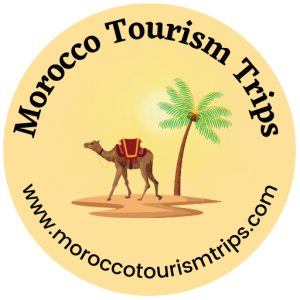Transportation in Morocco is diverse and includes various modes of transport, including road, rail, air, and sea. Here’s an overview of each:
- Road Transportation: The most common mode of transportation in Morocco is road transport. The country has a network of highways and roads connecting major cities and towns. Buses and taxis are the most popular means of transportation for locals and tourists alike, with many options available for both short and long distances.
- Rail Transportation: Morocco has a modern railway system that connects many major cities and towns. The network is operated by the state-owned Office National des Chemins de Fer (ONCF). There are several classes of train services available, including high-speed trains, express trains, and local trains.
- Air Transportation: Morocco has several international airports, including the Mohammed V International Airport in Casablanca, which is the busiest airport in the country. Other major airports include Marrakesh Menara Airport, Agadir–Al Massira Airport, and Rabat–Salé Airport. Domestic flights are also available and connect major cities within the country.
- Sea Transportation: Morocco has several major ports, including the Port of Casablanca, the Port of Tangier, and the Port of Agadir. These ports are important for trade and commerce and also serve as transportation hubs for passengers traveling by sea.
In addition to these ways to get around, Morocco also has a well-developed system of buses and trams for getting around in cities. Taxis and car rentals are also widely available for tourists who want to explore the country on their own. Overall, transportation in Morocco is reliable, affordable, and efficient.
Road Transportation:
- Buses are the most common mode of transportation for intercity travel, with several companies offering services across the country. Some of the popular bus companies include CTM, Supratours, and ALSA.
- Taxis are also a popular means of transportation in Morocco, with two types of taxis available: petit taxis (small taxis) and grand taxis (large taxis). Petit taxis operate within cities and charge fares based on a meter, while grand taxis operate on longer routes and charge per seat.
- Rental cars are also widely available, with major international car rental companies such as Avis and Hertz operating in the country
Rail Transportation:
- The ONCF operates the railway system in Morocco, with several types of trains available. The high-speed train (TGV) connects major cities such as Tangier, Rabat, Casablanca, and Marrakesh. Express trains and local trains also operate on the network, with varying speeds and comfort levels.
- Train tickets can be purchased online or at train stations, and first-class tickets generally offer more comfort and amenities.
Air Transportation:
- The major airlines operating in Morocco include Royal Air Maroc, Air Arabia Maroc, and Ryanair. Domestic flights are available between major cities such as Casablanca, Marrakesh, and Agadir.
- It’s recommended to book flights in advance to get the best deals, and some airlines offer discounted fares for students and seniors.
Sea Transportation:
- The ports in Morocco are important for both cargo and passenger transportation. Ferries operate between ports such as Tangier and Algeciras (Spain) and connect Morocco to Europe.
- Cruise ships also stop at Moroccan ports such as Casablanca, Tangier, and Agadir, offering tourists a chance to explore the country as part of a larger trip
Petit taxis in Morocco
Petit taxis are a common form of transportation in Morocco, particularly in larger cities like Casablanca, Marrakech, and Rabat. Here are some key things to know about petit taxis in Morocco:
- Size and color: Petit taxis are small, usually red-colored cars that can accommodate up to three passengers. They are often distinguishable by their taxi sign on the roof and their red color.
- Fares: Fares for petit taxis in Morocco are generally based on the distance traveled and are metered. The starting fare varies depending on the city, but it is usually between 2 and 3 dirhams. The fare then increases based on the distance traveled and the time of day.
- Availability: Petit taxis are usually available throughout the day and can be hailed on the street or found at taxi stands. In some cities, it may be necessary to negotiate the fare before getting in the taxi.
- Language barrier: It’s important to note that not all taxi drivers in Morocco speak English. It may be helpful to have your destination written down in Arabic or French or to use a translation app.
- Safety: As with any form of transportation, it’s important to use licensed taxis and avoid unmarked or unlicensed cabs. It’s also a good idea to sit in the backseat and avoid sharing taxis with strangers.
Overall, petit taxis in Morocco can be an affordable and convenient way to get around, particularly for short trips within cities. However, it’s important to be aware of the fare structure, language barriers, and safety concerns.


Leave a Reply